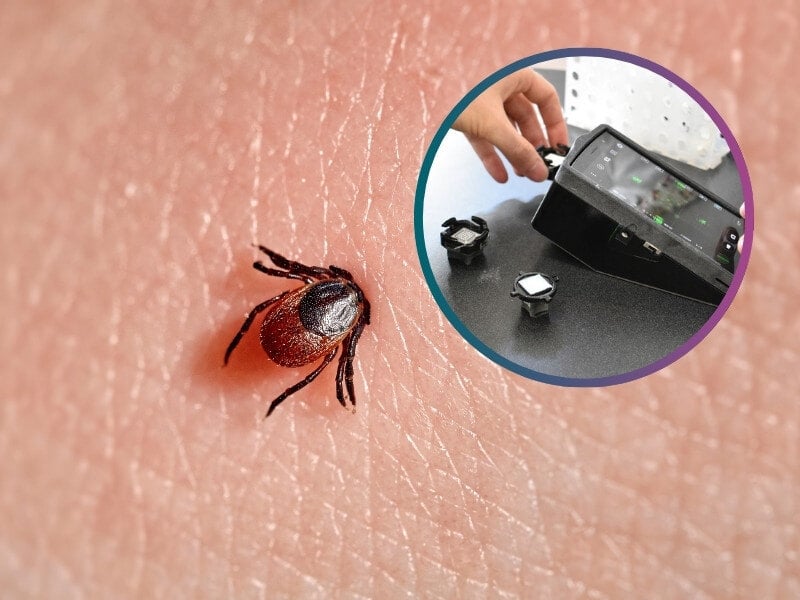AI Analysis of Patient Serum Presents Promising New Lyme Disease Diagnosis Tool

A research group out of the University of California, Los Angeles (UCLA) have presented a new tool for the diagnosis of Lyme disease. The point-of-care compatible serological test uses a multiplexed Lyme disease antibody detection panel and can return an accurate diagnosis of the disease within 20 minutes.
Dino Di Carlo, the Armond and Elena Hairapetian Professor of Engineering and Medicine in the UCLA Samueli School of Engineering, emphasized the importance of diagnostic tools that can detect the disease earlier: “A lot of folks find out they have Lyme disease well after the point at which they could have been treated very easily.”
He continued: "If we can measure rapidly, in a way that’s cost-effective and not a burden to the health system and the patient, then testing can be done more routinely. If you were out in the woods and have signs of a tick bite or other symptoms, it might be prudent to quickly test either at home or the local clinic, which could enable potential treatment earlier.”
In the study published in Nature Communications, the team from the California NanoSystems Institute at UCLA outlined how they used patient samples to validate their AI-enabled test.
This new detection method takes a sample of blood serum from patients, which is placed into a cartridge with a buffer fluid. Much like the lateral flow tests that we all became used to over the COVID-19 pandemic, the sample flows through a paper. Unlike COVID lateral flow tests however, the serum flows from top to bottom – down multiple layers of paper, rather than horizontally.
Downstream from the top of the cartridge, one of the layers of paper is coated in synthetic peptides which are specific to Lyme disease antibodies. These peptides are laid out in a matrix which captures the presence and quantity of each Lyme-specific antibody. The peptide array can then be digitally read by a smartphone and analysed by an AI model which returns either a positive or negative diagnosis.
 Image Credit: Rajesh Ghosh/UCLA
Image Credit: Rajesh Ghosh/UCLA
Co-corresponding author and the Volgenau Professor of Engineering Innovation at UCLA Samueli, Aydogan Ozcan, explained why AI methods were particularly useful to this form of diagnostic testing: “If you can quantify a panel of indicators from a single sample, you can learn a lot of interesting things regarding the patient’s condition.”
“In Lyme disease, we are examining a panel of immune factors that can look very different in different patients, depending on their background, where they’re from, etc. We needed AI to make sense of such a complex signal.”
Read more:
- Novel Proteomics Biomarkers Show Potential for TB Lateral Flow Test
- Proteomic Analysis of Serum Extracellular Vesicles Reveals Potential Biomarkers for Neuroblastoma
- Blood Biomarkers Signal Increased Risk of Alzheimer's & MND After Multiple Rugby Concussions
The AI algorithm as trained using both early and late stage Lyme disease samples from the Bay Area Lyme Disease Biobank. Researchers used newer samples from the biobank to validate their diagnosis tool. Here, results showed a 95.5% accuracy at detecting the disease, with no false positives. Furthermore, the team used samples provided by the US Center for Disease Control and Prevention (CDC), which showed that the tool was able to match standard laboratory testing.
Ozcan said: “AI is only as good as the data. That’s why we worked with the Lyme Disease Biobank and the CDC to obtain well-characterized samples. Their involvement was very important for our AI to learn the patterns of immune response against the bacterium that causes Lyme disease.”
This AI-enabled immunological approach aims to bring accurate diagnoses faster in terms of the time it takes to process, and sooner after potential infection. That would allow Lyme to be detected routinely after say, hiking in high risk areas, or after exhibiting early-stage symptoms.
Lyme disease – which is expected to infect over 600,000 people in the US this year – is often difficult to treat in its later stages and can be dormant for years. Therefore, this UCLA project provides hope for the management, prevention, and treatment of the disease.









